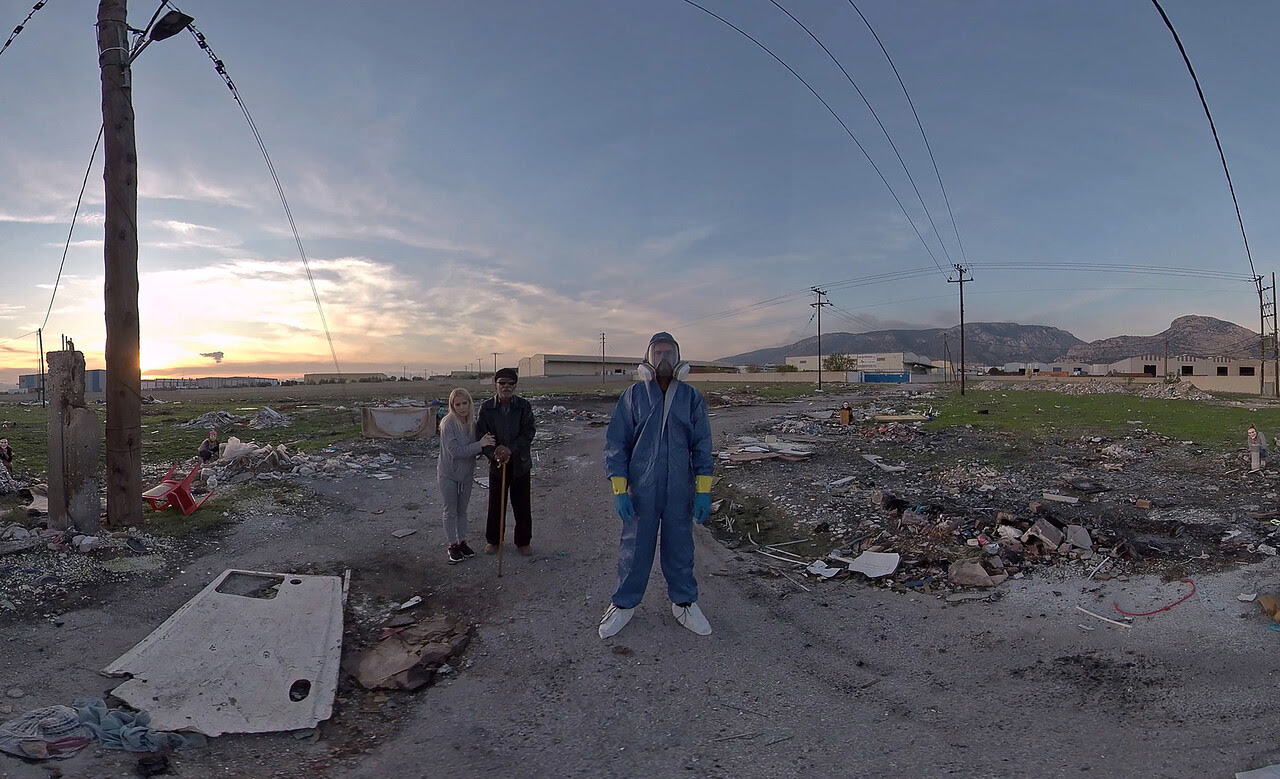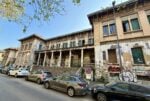59. Biennale – Loukia Alavanou

Loukia Alavanou rappresenta la Grecia alla Biennale di Venezia col progetto Oedipus in Search of Colonus.
Comunicato stampa
Loukia Alavanou
Oedipus in Search of Colonus
April 23–November 27, 2022
Professional preview: April 20–22
Add to Calendar
Press conference: April 22, 3pm, accreditation required
Add to Calendar
Greek Pavilion at the Venice Biennale
Giardini
30122 Venice
Italy
Hours: Tuesday–Sunday 10am–6pm
Add to Calendar
greekpavilion2022.gr
Instagram / Facebook
Representing Greece at the 59th Venice Biennale, the artist Loukia Alavanou restages an ancient drama to reflect contemporary events. The centerpiece of her exhibition Oedipus in Search of Colonus, curated by Heinz Peter Schwerfel, is a 15-minute VR film that transposes an almost 2500-year-old drama by Sophocles into the present and tells the story through a combination of docufiction, video clip, farce, and immersive technology. Infamous for his horrible deeds, Oedipus is banished from Thebes at the end of his life and comes to Colonus to die. For the first time in his tragic life, he goes against the will of the gods. In the face of their resistance, he chooses Colonus as his resting place, a sacred site consecrated by the gods.
In Alavanou’s version, which is filmed in a shantytown inhabited by Roma, an off-screen chorus tells the story. All the roles are played by Roma, amateur actors who lend the narrative a grotesque quality through their exaggerated acting. Their biggest problem is identical to that of aged Oedipus. Like him, the Roma who today live to the west of Athens, in an area not far from Colonus, also struggle against their fate. Often lacking any form of citizenship, these nomads are prevented by the Greek authorities from being able to choose a burial site close to their last place of residence.
This work is the first VR film shot in Greece that tells a cohesive story. It was filmed using a complicated 360-degree technology, which enables the viewer not only to see but also use their head movements to experience the entire scenario of interior spaces and drone flights over the settlement. The sound design is also directional, and, like the image, it responds to the movements of the viewer.
Four hemispherical domes are installed in the pavilion. Each has space for three to five posture chairs, which are based on the designs of the Greek utopian architect Takis Zenetos, who died in 1977. The entire pavilion is kept in semi-darkness, creating a simultaneously theatrical and mysterious atmosphere that forms an island of reflection in the middle of the world's biggest art exhibition.
The project is funded by the Hellenic Ministry of Culture and Sports. The National Gallery of Greece has been appointed commissioner.
Artist: Loukia Alavanou
Curator: Heinz Peter Schwerfel
Commissioner: National Gallery of Greece, Alexandros Soutsos Museum / Marina LambrakiPlaka
Architectural concept: AREA – Architecture Research Athens
Architectural and installation design: Korres Engineering
Sound designer: Manolis Manousakis
Production advisor: Christina Pigaki
Head of production: Olga Hatzidaki



